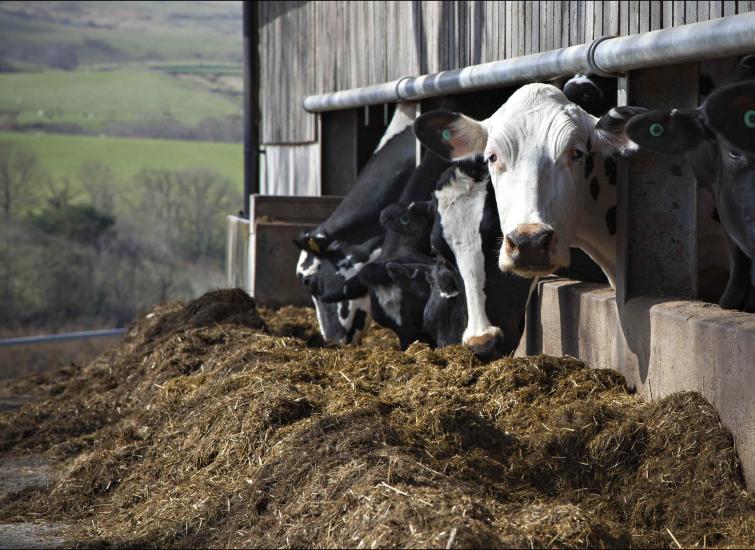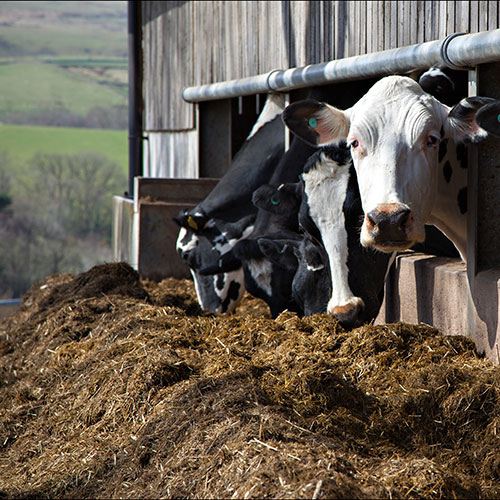Advanced Robot were the first company with a dedicated robotic division and were able to pull data out of the robots regularly to make improvements on farm.
A proactive approach is key to transition success
We spoke to a dairy nutritionist and former herd manager for his tips on how to optimise transition management and set cows on a firm course towards lactation success. First published in Cow management.

The move from herd manager to ruminant nutritionist was a natural progression for Callum Wright. “As soon as I understood what a difference nutrition could make to herd health and production, I was keen to make an impact in that area,” he says. Before joining Advanced Ruminant Nutrition, he was herd manager on a Stirlingshire-based robotic unit for five years. A key priority at the 160-cow robotic setup was improving transition management, and while the research and principles remained unchanged, his emphasis shifted once he became a nutritionist.
“Managing dry cows involves several critical aspects but, with a long list of tasks associated with it as a producer, it’s often a case of tackling the priorities. As a result, dry-cow management systems and protocols may not always be fully implemented, and that’s where things can start to go wrong.”
Mr Wright acknowledges that producers are aware of the key factors to look at such as DMIs, reducing stress, managing the environment, and providing optimal lighting. “As a herd manager I saw different systems, but didn’t get the time to fully understand their impact on the cows. Now, as a nutritionist visiting numerous herds and units, as well as spending time scoring mobility or body condition scoring, I can walk through a cow shed and benchmark against a wide range of units, to immediately identify any bottlenecks holding the system back.”
So what different perspective does he believe producers should have on transition management in order to make a difference?
“The key is to be proactive no matter what the system. Prevention is definitely better than cure when managing transition cows. And blood testing, with help from the herd vet, is one area where producers can proactively monitor cows in this period and assess their response to the diet offered.
“This is a cost-effective way to monitor dry cows and detect potential problems before they can be observed.” He says that prior to introducing blood profiling on the unit where he previously worked there was a lack of clear understanding of the herd’s particular issues.
“For example, we may have suspected there was a problem with the dry-cow ration, but had no real proof. Blood profiling meant we could attribute inconsistencies in performance and pinpoint underlying causes. This is particularly valuable when managing multiple variables and if herds are hampered by unseen sub-clinical issues throughout lactation,” he says. Different requirements Grouping cows is also important. “Groups for pre-fresh and fresh cows is the ideal. This may be impossible due to time and space constraints, but it is vital to monitor these groups and understand their different nutritional requirements,” explains Mr Wright.
For pre-fresh groups, focus on protein and energy levels to gear up for colostrum production. “And for the fresh-cow group, producers must be proactive in addressing nutritional needs, to set the cow up metabolically to ensure improved production throughout multiple lactations.
“Offering liquid feed at the robot, for example, to provide the right nutrients to freshly calved cows, and offering propylene glycol or protected glycerine in the early stages of lactation. This will support cow health, improve production and support fertility, helping cows get back in calf more easily,” he adds.
A typical mistake is failing to fully commit to a specific dry-cow management approach. Effective transition management requires attention to detail and careful consideration of system protocols and management, the environment, and nutrition.
“Regardless of the dry-cow feeding strategy, whether it’s DCAD or mineral binders, without proper implementation and monitoring, the system will fail to deliver consistent results, leading to ongoing troubleshooting,” stresses Mr Wright.
He acknowledges that not all producers have time monitor dry cows constantly. DCAD and semi-DCAD systems can be complex, requiring monitoring of urine pH and constant sampling of silages with continuous variability of output. To simplify the process, and to optimise the use of producers’ time, he recommends feeding the mineral binder X-Zelit.
Calcium mobilisation This is a calcium and phosphorus binder that naturally stimulates the cow to mobilise her own calcium reserves for effective milk-fever prevention. He tried several systems when working with the robotic herd and says that not only did introducing the mineral binder simplify dry-cow nutrition, but it also helped identify potential issues more easily.
“Although once a day is fine, we chose to feed the concentrate containing the product twice a day. This offered additional opportunities to spot early signs of any issues, such as lameness.”
“Whichever system producers opt for, it must, ideally, be less hassle than using DCAD because DCAD really requires accuracy for it to work consistently.”
Mr Wright adds that if producers are feeding transition cows effectively and, as a result, there are fewer interventions, this helps to reduce stress on both cattle and dairy staff. During a recent study that compared the DACD system with the mineral binder X-Zelit, the latter stood out due to its ability to reduce the number of ‘cow touches’ during the transition period. Unlike conventional methods that may require frequent interventions, it helped to minimise the requirement for hands-on management, streamlining the transition process and reducing associated costs.
Poor transition management can, indeed, result in significant additional labour, and vet and medicine costs. “With any dry-cow management system, there will be exceptions to the rule where lame or over-conditioned cows slip through the net.
“But quite often producers fail to put a robust transition-cow management system in place, or have one that’s not fully implemented,” says Mr Wright. “It may seem like the system is working, but I always ask the question – have you got the records to back it up?
“If I offer just one piece of advice, it would be to improve recordkeeping. Accurate data builds a clear picture of what’s happening and allows producers to make more informed and effective decisions.”
〈 BACK




